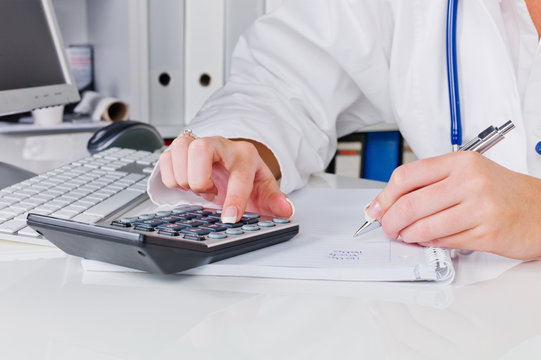Article -> Article Details
| Title | Comprehensive Remote Patient Monitoring Services | Improve Patient Outcomes |
|---|---|
| Category | Fitness Health --> Family Health |
| Meta Keywords | Medical va |
| Owner | Zach Wilson |
| Description | |
| Introduction The U.S. healthcare landscape is rapidly evolving, and Remote Patient Monitoring (RPM) is at the forefront of this transformation. Through advanced connected health technologies, RPM enables healthcare providers to continuously monitor patients outside traditional clinical settings. This approach not only enhances patient outcomes but also helps reduce readmissions, optimize clinical workflows, and lower costs. At Care VMA Health, we provide HIPAA-compliant remote patient monitoring solutions designed to improve the efficiency of healthcare practices and ensure high-quality, continuous care. What Is Remote Patient Monitoring (RPM)?Remote Patient Monitoring involves the use of digital technologies to collect health data from patients in real time—data such as blood pressure, oxygen levels, glucose readings, and heart rate. This data is securely transmitted to healthcare professionals for ongoing assessment. By enabling continuous tracking, RPM empowers clinicians to detect potential issues early and take proactive steps before they escalate into emergencies. LSI Keywords:
The Growing Importance of Comprehensive RPMAs chronic diseases like diabetes, hypertension, and cardiovascular conditions rise across the United States, the demand for continuous monitoring has never been greater. Comprehensive RPM fills this gap by enabling real-time health tracking, personalized treatment plans, and timely interventions—all while keeping patients comfortably at home.
Key Components of an Effective RPM ProgramImplementing a successful RPM program requires a structured framework combining technology, human expertise, and compliance. 1. Connected Health DevicesSmart devices such as Bluetooth-enabled blood pressure cuffs, pulse oximeters, and wearable ECG monitors collect data in real time. 2. Data Integration & AnalyticsAdvanced analytics platforms process data trends and notify clinicians of abnormal readings—improving clinical decision-making. 3. Care CoordinationRemote care teams, like those at Care VMA Health, ensure seamless communication between patients, physicians, and specialists. 4. Compliance & SecurityHIPAA-compliant systems protect patient data and ensure adherence to CMS regulations. Benefits of Remote Patient Monitoring for Healthcare Providers1. Improved Clinical OutcomesContinuous monitoring leads to early intervention, helping providers reduce complications and emergency room visits. 2. Enhanced Patient EngagementPatients feel more connected to their care teams, improving adherence and satisfaction. 3. Increased Revenue OpportunitiesThrough CMS-approved RPM billing codes (CPT 99453, 99454, 99457, 99458), providers can create new revenue streams while improving care. 4. Streamlined WorkflowsBy outsourcing monitoring tasks to virtual medical assistants, healthcare organizations can focus on high-priority clinical decisions. For a deeper look into how virtual assistants support RPM, explore our related service:  The Role of Virtual Medical Assistants in RPMVirtual medical assistants (VMAs) play a vital role in supporting remote patient monitoring programs. These professionals help healthcare providers by:
At Care VMA Health, our virtual medical assistants are trained in telehealth operations, patient engagement, and electronic health record (EHR) systems, ensuring accuracy and compliance across every task. How RPM Enhances Chronic Care ManagementFor patients with long-term conditions like COPD, diabetes, and heart disease, RPM provides continuous oversight. This leads to fewer hospitalizations, better medication adherence, and improved lifestyle outcomes. A study published by the National Institutes of Health (NIH) highlights that patients under remote monitoring programs saw a 25% reduction in hospital readmissions compared to traditional care. By integrating remote monitoring with chronic care management (CCM), healthcare providers can deliver comprehensive, proactive, and value-based care. Challenges and Compliance in RPM ImplementationWhile RPM offers numerous advantages, implementing it requires addressing several challenges:
Partnering with experienced providers like Care VMA Health helps healthcare organizations overcome these hurdles through customized implementation strategies and ongoing virtual support. High-Authority References
FAQs About Comprehensive Remote Patient Monitoring1. What is the main purpose of remote patient monitoring?The main goal of RPM is to improve patient care through continuous health tracking, enabling timely interventions and reducing hospital visits. 2. Is remote patient monitoring covered by insurance or Medicare?Yes. CMS has introduced specific billing codes for RPM, allowing providers to receive reimbursement for remote care services. 3. What types of patients benefit most from RPM?Patients with chronic illnesses such as diabetes, hypertension, heart failure, and COPD see the most benefits from remote monitoring. 4. How does Care VMA Health support RPM implementation?Care VMA Health provides trained virtual medical assistants who handle patient monitoring, documentation, and follow-ups under HIPAA-compliant systems. 5. Is RPM data secure?Absolutely. All patient data is encrypted and handled through HIPAA-compliant platforms ensuring privacy and protection. Conclusion: The Future of Connected CareComprehensive Remote Patient Monitoring is redefining how healthcare is delivered across the United States. With real-time data insights, proactive care, and virtual medical support, it bridges the gap between patients and providers. Care VMA Health remains committed to helping practices implement effective RPM solutions that enhance care quality, compliance, and efficiency. Learn more about how we support healthcare providers with Remote Patient Monitoring Services and discover how connected care can transform your practice today. | |
